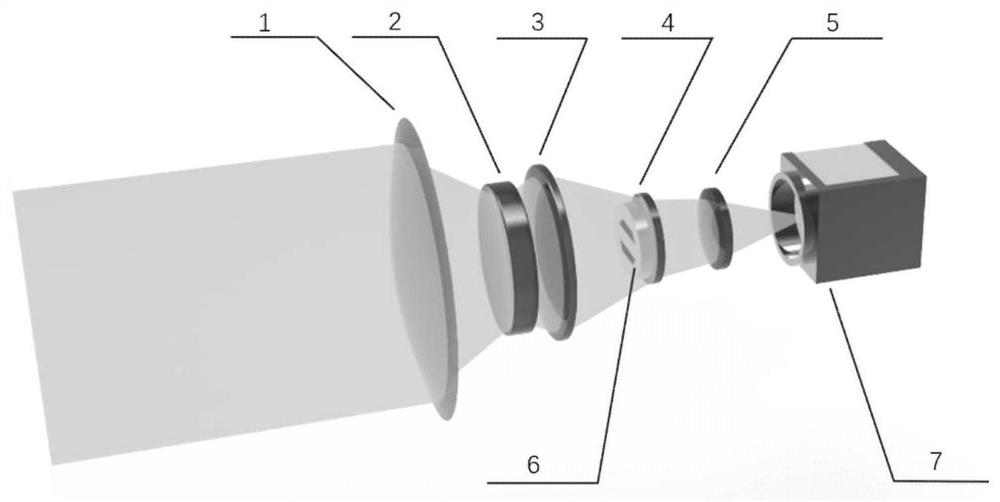A transmission-based infrared aperture coding imaging system and its super-resolution method
An imaging system, transmission technology, applied in parts of TV system, image communication, instrument, etc., can solve problems such as difficulty in reconstructing high-resolution images, system complexity, etc., achieve fast measurement, compact system structure, and improve imaging quality Effect
- Summary
- Abstract
- Description
- Claims
- Application Information
AI Technical Summary
Problems solved by technology
Method used
Image
Examples
Embodiment Construction
[0013] to combine figure 1 , the present invention is based on a transmissive infrared aperture coding imaging system, which consists of a condenser lens 1, a zoom lens 2, a compensation lens 3, a field lens 4, a converging lens 5, a double-slit physical aperture stop 6, and a camera 7, and adopts a perspective An optical path structure, the transmission optical path structure is composed of a condenser lens 1 , a zoom lens 2 , a compensation lens 3 , a field lens 4 , a converging lens 5 , and a double-slit physical aperture stop 6 . Condensing lens 1, variable power lens 2, compensation lens 3, field lens 4, and converging lens 5 form an imaging lens group. In this optical path structure, the double-slit physical aperture stop 6 is placed on the aperture plane of the imaging lens group, The camera 7 is located on the rear focal plane of the imaging lens group, which can realize the modulation function of the aperture plane of the imaging lens group and reduce the aberration o...
PUM
 Login to View More
Login to View More Abstract
Description
Claims
Application Information
 Login to View More
Login to View More - R&D
- Intellectual Property
- Life Sciences
- Materials
- Tech Scout
- Unparalleled Data Quality
- Higher Quality Content
- 60% Fewer Hallucinations
Browse by: Latest US Patents, China's latest patents, Technical Efficacy Thesaurus, Application Domain, Technology Topic, Popular Technical Reports.
© 2025 PatSnap. All rights reserved.Legal|Privacy policy|Modern Slavery Act Transparency Statement|Sitemap|About US| Contact US: help@patsnap.com



